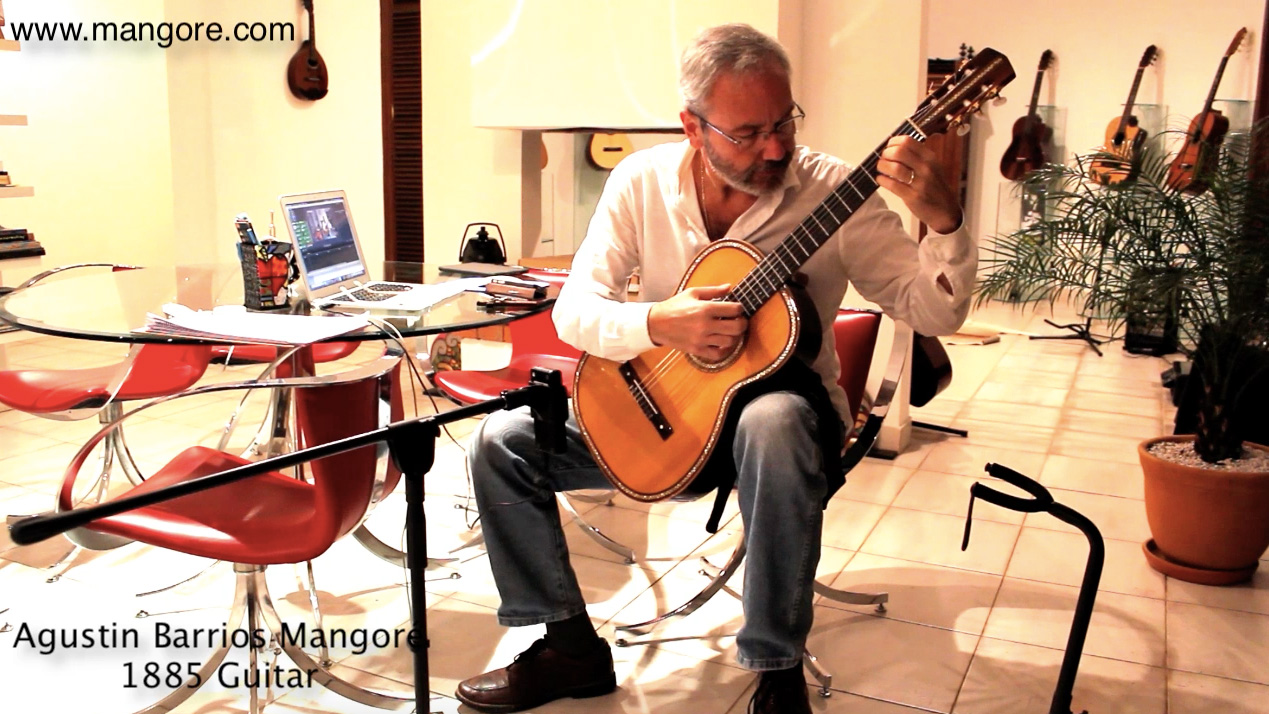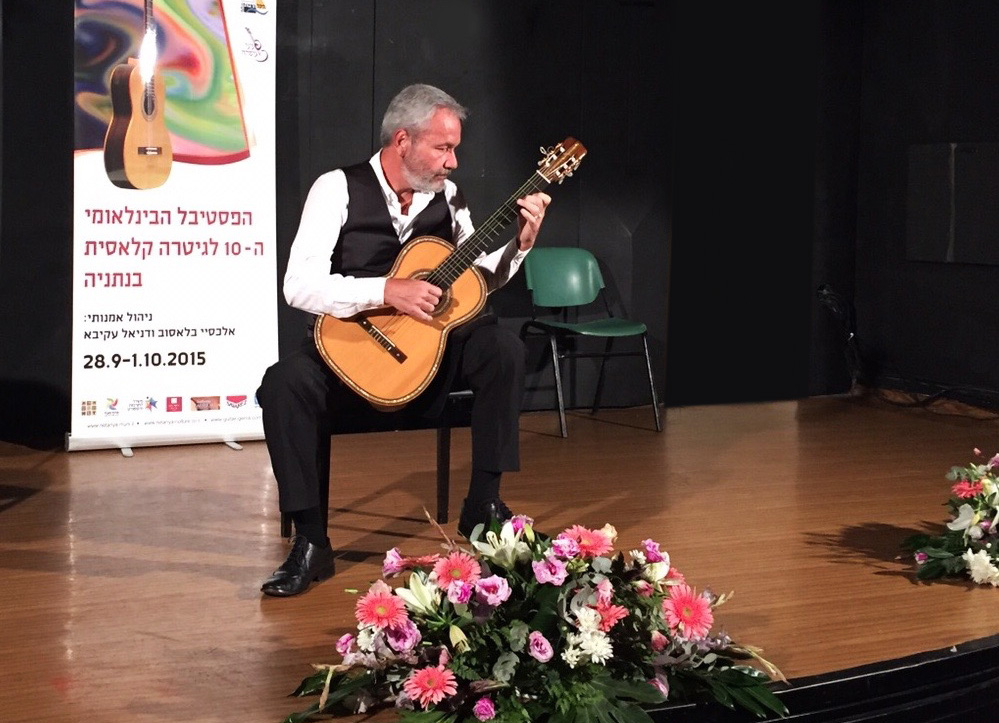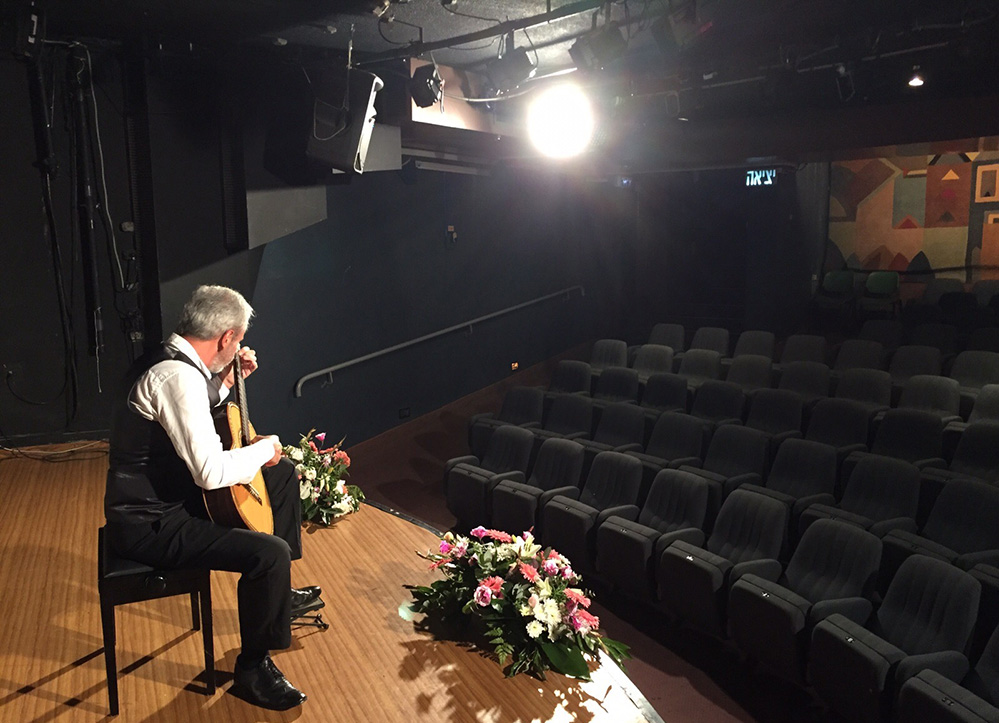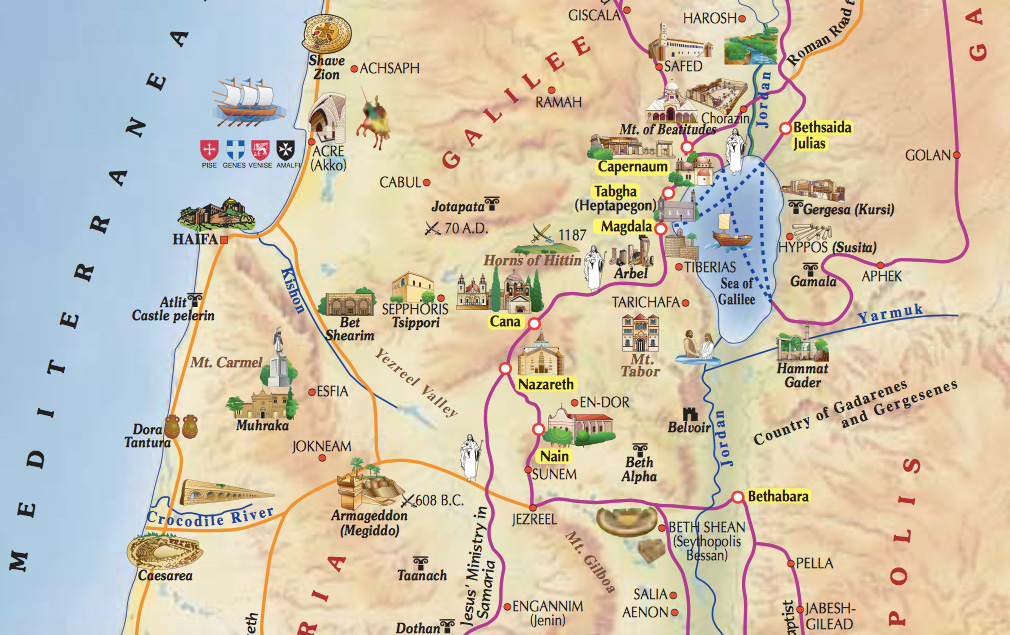Renato Bellucci Rehearses pieces to play in Israel in September

Asturias played on Barrios 1885 Guitar
I am amazed at how Divine Providence aligns things in order to fulfill its children greatest dreams. I have always wanted to travel to Israel and walk in the footsteps of our Lord Jesus Christ. I was in Jerusalem when I was only a 2-year-old but except for the fact that the immense Grace that fills this land must have acted on me, I had no recollection whatsoever of those childhood years.





Una Limosna Por El Amor de Dios
Una Limosna por El Amor de Dios, AKA The Last Song is Agustin Barrios last composition. If there is one guitar piece that every guitarist really, really wants to play is a tremolo piece. The best known is Recuerdos de la Alhambra (Remembrances of the Alhambra -the Moorish palace in Granada, Spain). It is one of the few great guitar compositions prior to Barrios Mangore. The world of music is generally divided in Before Bach-After Bach. The world of guitar I divide into Before Barrios-After Barrios. Recuerdos de la Alhambra is a gorgeous piece. Barrios Mangore Una Limosna por el amor de Dios -"An Alm for the Love of God" is a masterpiece.
The best rendition of tremolo I have ever heard is Narciso Yepes. His Deutsche Grammophon recording of Recuerdos de la Alhambra is simply marvelous. Segovia's tremolo was also very good. He almost never played tremolos in his concerts though. This was due to the fact that besides Recuerdos, the other great tremolos were Mangore's Una Limosna por el amor de Dios and Un Sueño en la Floresta "A dream in the Forest". Segovia never played any Mangore although he greatly admired the Paraguayan composer whom he met in Buenos Aires, Argentina. He took a dedicated copy of La Catedral which he promised he would play and record, but never did. The reasons are almost too obvious, they call for sinful speculations.
If it were not for the English - Australian guitarist John Williams recording of Barrios in the 70s, we would probably not even know about this phenomenal composer and guitarist. I will play the piece in Netanya, Israel on September 29.
Renato Bellucci plays Cello Prelude #1
Preludes are, generally speaking, "appetizers" for the suite. They introduce the key and many musical ideas which will be developed in the movements (dances) that will follow.
Preludes were originally meant for church organs. They were referred to as: "Crude and shapeless wanderings.. uninfluenced even remotely by song or dance.. fingers wander idly over the noisy keys presumably in order to loosen them up."
This description is probably very accurate especially since it comes from a time when music was not a free art form but was strictly associated to other activities such as dance or prayer. The praeambula was the first spark of an amazing revolution which would be coined in the words art music.
Bach iss the essence of art music. He dedicated all his work to God but to Johannes, music was meant "to be worthy of" God. Therefore, when his genius was freed from the strict musical forms of the time and was allowed to wander in a free form such as the prelude, semi-miracles would result.
This is the reason why Bach preludes can stand alone as great masterworks. The soul of the composer stands out in every measure. Visit the Masterclass HERE
The Chaconne, Parts 1 & 2
The Chaconne: It has taken me the best part of 7 years to complete the offering of Bach Chaconne in Dm to my students. I was not contemplating the gigantic enterprise I was about to embark on and only today I am happy I did not. I would have probably never started if I had known all that was going to happen from the day I started in January 2007 and the day I uploaded the last staff and video in October 2014. You will even see my style in preparing the staffs and scores change as the years passed and I got a hold of different music notation software and expertise. Only these past few days in April 2015 I decided to format and even out the staffs and scores but only partially because I do not want the work to loose its epic background story. Very much in the Bachian style, I want to offer this accomplishment to God and do it the way the great German Master did with a sober and very direct S.D.G. Soli Deo Gloria, To God All the Glory.
"...And the Oscar to the "All-time Greatest composer" goes to: Johan Sebastian Bach! Bach is the real reason I decided to remain an interpreter and not feel the urge to become a composer. I had to be at least partly responsible to keep his work alive. In Bach's work we find the highest and most precious virtues of a human being: Faith,work, love and passion illuminated by the greatest genius who knew exactly where he was coming from and where he wanted to go: Heaven. I was recently hearing a lecture and I came to find out that Bach music is responsible for the conversion of many agnostics and atheists. In the words of one of these converts: "When you discover Bach's St. Matthew's Passion you come to the conclusion that there must be a God". The most lovable thing about the man is that if an Oscar had really been handed out to him he would have certainly replaced the plaque's inscription with one saying D.O.G. (Deo Omnis Gloria or S.D.G. Soli Deo Gloria that crowned all his work -To God Alone the Glory-). It took 49 years and the effort of 12 countries and 23 royal patrons to gather and publish the complete corpus of Bach's surviving works. Visit the Masterclass HERE
Renato Bellucci plays "Chaconne", Part 3 & 4
Heaven and Earth come together in the Chaconne...The Well Tempered Clavier works also belong to this period along with the Inventions. The Chaconne was the most daring work from this period and probably one of humanity's highest musical accomplishments. The Chaconne is a special type of continuous Theme and Variations where a somewhat short subject (normally 4 measures) is relentlessly repeated and varied. The total sixty variations are built on a descending ground bass: D, C#, Bb, A. It is a slow dance in simple triple meter (Bach's compositions were all in triple time, as a reminder of his love for The Holy Trinity), often in a minor key. It uses the rhythm of a Saraband (an antique Spanish dance) .
Renato Bellucci "Elegia", F. Moreno-Torroba
Elegia is one of my al-time Spanish favorites by one of the greatest ever: Moreno-Torroba. I find Torroba to be one of Spain's greatest composer. His writing is intelligent and passionately Spanish in character. Torroba introduces contemporary harmonies "in the right measure".
Neil Armstrong was setting foot on the moon in 1969. Andrés Segovia was recording Torroba's suite Castles of Spain for Decca. Below is a picture of Elegia, the castle that crowns Torija, a small town in central Spain. This is what the castle looked like when Torroba wrote the piece. You can hear the wind blowing between the ruins in the echoing opening melodies. Visit the Masterclass HERE
Renato Bellucci plays "Som de Carrilhões"
Chôro, is the name given to a typical Brazilian musical style, and the group of musicians that performs it. Generally speaking, chôro is an urban instrumental dance. It was very popular in Rio de Janeiro, Brazil, in the 1970s. The musicians played the flute, clarinet, tuba, and a Brazilian type of guitar similar to the ukulele and percussion. The tunes were usually European in origin although towards the first half of the 20th Century, Brazilian tunes were the main influence. Throughout the 20th Century, Chôro passed to other Americanization countries where it evolved in Maxie, Samba and Tango.
The word Chôro means To Cry in Portuguese. Therefore, the rhythmic figure Rhythm which is present throughout the piece, represents the sniffing produced by a person when crying. This one's called "Som de Carrilhões". At the end of the recording, my wife Belén enters the scene... she's frustrated because her cellphone won't work :-) .... Visit the Masterclass HERE
 Back to Top
Back to Top


